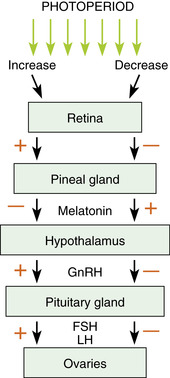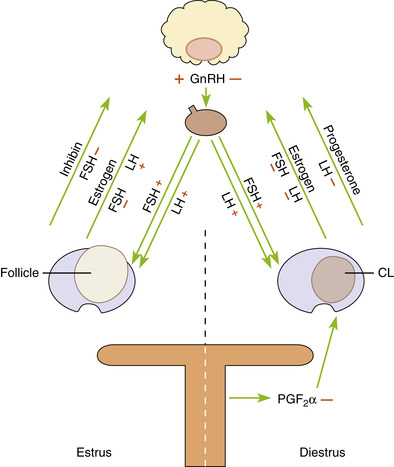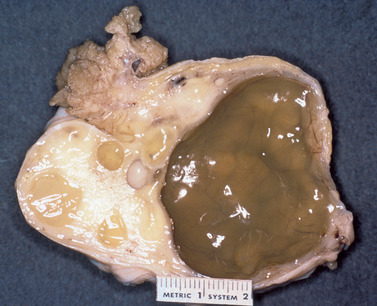CHAPTER 2. Reproductive Physiology of the Nonpregnant Mare
OBJECTIVES
While studying the information covered in this chapter, the reader should attempt to:
■ Acquire a working understanding of the physiology of the estrous cycle of the mare.
■ Acquire a working knowledge of the criteria used for staging the estrous cycle of the mare.
■ Acquire a working understanding of seasonal control of reproductive function of the mare.
STUDY QUESTIONS
1. List the length of the estrous cycle, estrus, and diestrus in the mare.
2. Explain the endocrine events that occur during estrus, ovulation, formation of the corpus luteum, and luteolysis in the mare.
3. Explain why determination of the presence of a large follicle on an ovary is a poor predictor of estrus in the mare.
4. List the criteria that are useful in staging the estrous cycle via palpation per rectum in the mare.
5. Describe the ultrasonographic changes that occur in the dominant follicles as ovulation approaches.
6. Describe the effects of long and short photoperiods on control of reproductive function of the mare.
7. Describe the seasonal effects on incidence of ovulation in mare populations in the Northern Hemisphere.
8. Discuss effects of season on duration of estrus in the mare, including the first postpartum estrus (foal heat).
THE ESTROUS CYCLE
The mare is a seasonal polyestrous animal. During the breeding season (spring and summer), the nonpregnant mare has recurring estrous cycles. The length of the estrous cycle can be defined as the period from one ovulation to a subsequent ovulation (interovulatory interval). Each ovulation is accompanied by a period of behavioral signs of estrus while plasma progesterone concentrations remain low (<1 ng/mL). The estrous cycle is divided into the ovulation process and an interovulatory period. The estrous cycle may also be considered to consist of a follicular phase ( estrus) (in which the mare is sexually receptive to the stallion, and the genital tract is prepared to accept and transport sperm to the oviducts for fertilization) that involves the ovulation process and a luteal phase ( diestrus) (in which the mare is not receptive to the stallion, and the genital tract is prepared to accept and nurture the conceptus). The diestrous period ends with regression of the corpus luteum, initiation of the next follicular phase, and onset of estrous behavior. The average length of the estrous cycle in mares during the physiologic breeding season is 21 to 22 days (range, approximately 18 to 24 days), with estrus comprising 4 to 7 of these days (Figure 2-1). The length of diestrus remains relatively constant at 14 to 15 days and is less affected by season than is the length of estrus. The length of estrus is more variable (range, 2 to 12 days, or more), typically with a longer duration early in the breeding season, perhaps as the result of a less prominent luteinizing hormone (LH) surge during this time period. The diameter of the largest follicle at the time of luteolysis affects the interval from onset of estrus to ovulation; larger follicles present at corpus luteum (CL) regression typically ovulate sooner, thus shortening the associated estrous period.
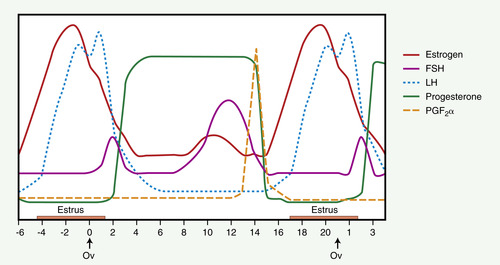 |
| Figure 2-1 (Modified from Irvine CHG: Endocrinology of the estrous cycle of the mare: applications to embryo transfer, Theriogenology 15:85, 1981; and Neely DP, et al: Equine reproduction, Princeton, NJ, 1983, Veterinary Learning Systems Co) |
The regular pattern of the estrous cycle relies on the delicate balance among hormones produced by the pineal gland, hypothalamus, pituitary gland, ovaries, and endometrium (Figure 2-2 and Figure 2-3). The neurosecretory cells in the hypothalamus produce gonadotropin- releasing hormone (GnRH). Axons of these cells project into the perivascular space in the median eminence at the origin of the pituitary stalk and episodically release GnRH into the hypothalamic-hypophyseal (hypothalamic-pituitary) portal system, which transports the hormone to the anterior pituitary. GnRH stimulates the synthesis and release of the gonadotropin follicle-stimulating hormone (FSH) and LH from the anterior pituitary gland. These hormones enter the systemic circulation, and at the level of the ovaries, FSH is responsible for follicular recruitment whereas LH is responsible for follicular maturation and production of estrogen, ovulation, and luteinization. The estrogen produced by maturing follicles (particularly the dominant follicle) has a positive feedback on LH release (i.e., it promotes further LH release) in the presence of low circulating progesterone concentration. Inhibin and estrogen produced by growing follicles have a negative feedback effect on release of FSH (i.e., they inhibit FSH release). Progesterone produced by the CL has a negative feedback effect on release of LH from the anterior pituitary.
The follicular phase of the estrous cycle is characterized by follicular growth with estrogen production, which results in behavioral estrus (Figure 2-4). Many follicles start the maturation process, but usually only one follicle becomes dominant and ovulates. Follicular development typically occurs in one or two major waves during the estrous cycle. The term follicular wave has been used to describe the initially synchronous growth of a group of follicles until one or perhaps two, or rarely more, follicles begin preferential growth (i.e., become dominant) to the remaining follicles. The selected follicle continues to grow (>30 mm diameter) (Figure 2-5) until it either ovulates or regresses. For mares with one follicular wave during the estrous cycle, the wave emerges at midcycle (approximately day 10 after ovulation). This primary follicular wave results in an ultrasonographically identifiable dominant follicle approximately 7 days before ovulation. For mares with two follicular waves during the estrous cycle, the dominant follicle selected during the first follicular wave that begins during late estrus or early diestrus sometimes ovulates (diestrous ovulation). The incidence of secondary follicular waves and diestrous ovulations is currently thought to be higher in Thoroughbreds than in Quarter Horses and ponies and may contribute (when ovulation occurs) to longer diestrous intervals within a breed when compared with mares of the same breed that do not have diestrous ovulations.
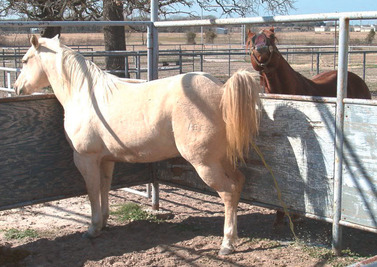 |
| Figure 2-4 |
At the onset of luteolysis, the largest follicle is typically the one to enlarge and ovulate. Ovulation is a rapid process, with most of the follicular fluid being released within 2 minutes (50% to 90% evacuation within 60 seconds) and with complete evacuation typically requiring 2 to 7 minutes. The remainder of the follicles that have already become atretic eventually regress. In light breed horse mares, follicular diameter at ovulation normally ranges from 30 to 50 mm (seldom <35 mm) and usually approximates 40 to 45 mm, although smaller or larger follicles sometime ovulate. Smaller breeds (e.g., ponies and miniatures) tend to ovulate smaller (≤30 mm) follicles, and larger breeds such as draft mares, especially Friesians, tend to ovulate larger (>45-mm follicles). Ovulatory follicles are often larger early in the breeding season (March to May) compared with those that ovulate in the peak of the season (June and July). Most mares ovulate within 48 hours before the end of estrus; occasionally mares ovulate after the end of estrus (usually on the day when intensity of estrous signs is decreasing). The incidence of double (multiple) ovulations averages 16%, with Thoroughbred, Warmblood, and draft mares having the highest incidence of multiple ovulations and Quarter Horse, Appaloosa, and pony mares having the lowest incidence.
The luteal phase is initiated at ovulation by the formation of a progesterone-secreting CL (Figure 2-6), which causes the mare to cease showing signs of behavioral estrus (Figure 2-8). Maximum circulating progesterone concentrations are reached by 6 days after ovulation. A mare rarely shows behavioral signs of estrus when plasma progesterone concentrations exceed 1 to 2 ng/mL, even when large follicles are present on the ovaries. The life span of the corpus luteum is dependent on the endogenous release of prostaglandin-F2α (PGF 2α) from the endometrium, which occurs in bursts between days 13 and 16 after ovulation. The PGF 2α is absorbed into the uterine venous drainage and, unlike in the cow, enters the circulation and reaches the ovaries primarily via systemic circulation. Rapid luteolysis is caused by the PGF 2α, resulting in a decline in circulating progesterone concentration (a detectable decline occurs within 4 hours, with concentrations less than 1 ng/mL occurring within 40 hours of the initial PGF 2α release), which, in turn, removes the block to LH secretion. Follicular maturation and behavioral signs characteristic of the follicular phase of the estrous cycle then ensue. Deviations (of several days) in the length of the luteal phase are usually the result of uterine disorders that lead to spurious secretion of PGF 2α, such as acute endometritis (which shortens diestrus) or persistent luteal function (which prolongs diestrus) from failure of the luteolytic mechanism (perhaps from failure of the endometrium to release sufficient amounts of PGF 2α in late diestrus).
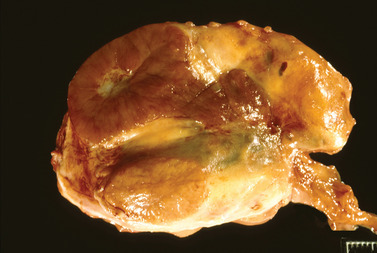 |
| Figure 2-6 (Photo courtesy of Dr. John Edwards.) |
STAGING THE ESTROUS CYCLE VIA EXAMINATION
Determination of the stage of the estrous cycle can be made via examination of the reproductive tract. Criteria that are used for determining the stage of the cycle include the size and softness of ovarian follicles and relaxation of the uterus and cervix, via palpation per rectum. With the exception of determination of a recent ovulation (i.e., typically within 0 to 3 days) (see Figure 2-7), palpation for presence of a CL is not possible in the mare (e.g., the follicle ovulates into the ovulation fossa and the CL does not protrude from the surface of the ovary). Use of transrectal ultrasonography is also helpful for staging the estrous cycle because the size and character of the follicles can be determined, corpora lutea can be visualized, and the degree of endometrial edema can be determined. Determination of whether the cervix is tight and closed or relaxed and open is typically made via palpation per rectum. Determination of whether the cervix is closed and dry or relaxed, edematous, and moist with cervical mucus can also be made via palpation per vagina or via visualization per vagina with a speculum. Finally, accurate teasing information, including the dates on which signs of estrus or nonestrus were determined when the mare was presented to the stallion, is helpful in staging the cycle (see Figures 2-4 and Figure 2-8, Figure 2-9, Figure 2-10 and Figure 2-11).
< div class='tao-gold-member'>
Only gold members can continue reading. Log In or Register to continue
Stay updated, free articles. Join our Telegram channel

Full access? Get Clinical Tree


